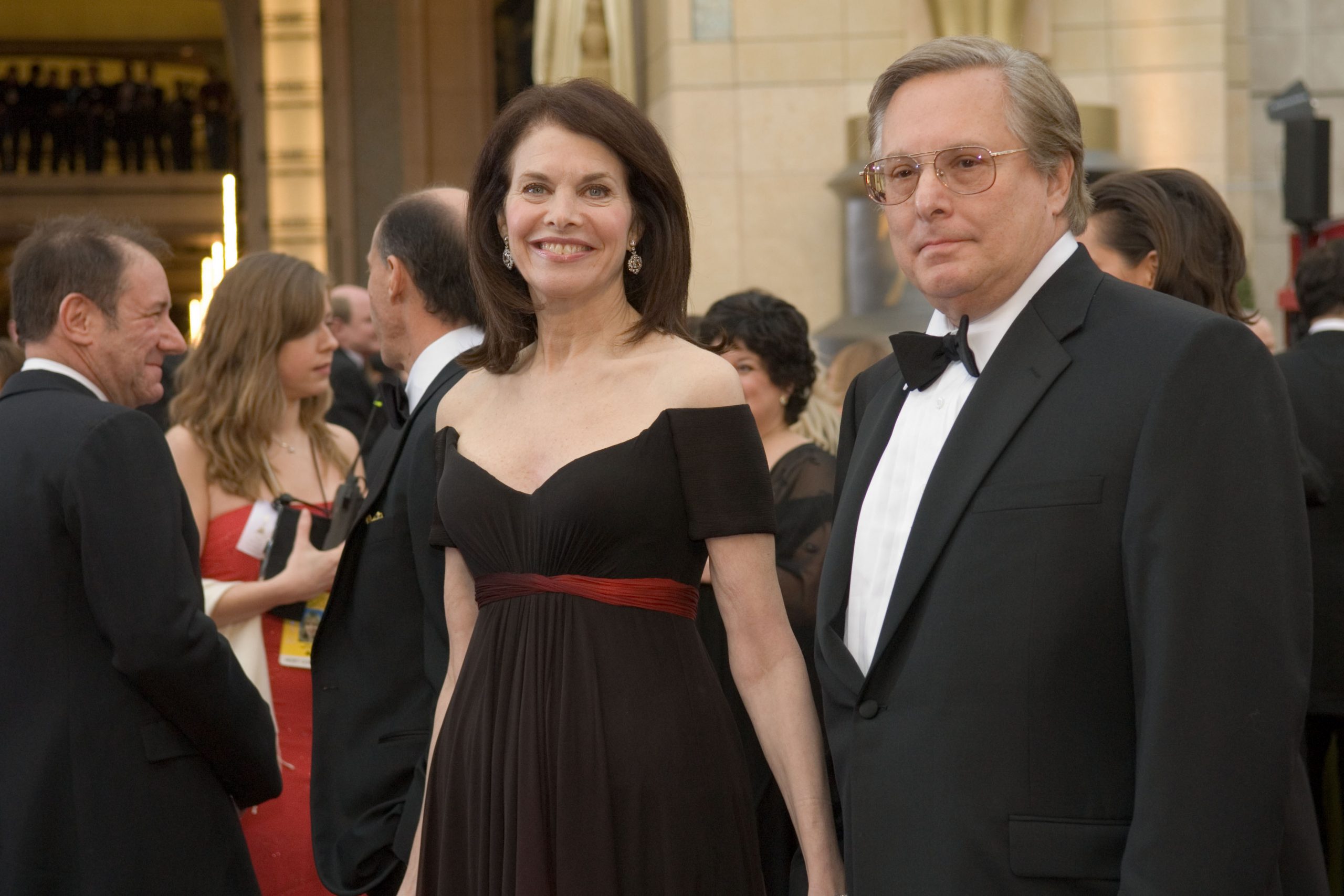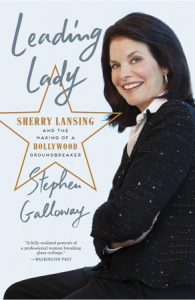
Leading Lady: Sherry Lansing and the Making of a Hollywood Groundbreaker, written by Stephen Galloway, is a superb biography.

One does not have to get far into this book to realize how quickly paced it is. Galloway’s prose reads as if it were a novel even though this book is a non-fiction biography of one of the few female executives to head a Hollywood studio. It was never supposed to be this way, however, because Lansing had dreams of being an actress. Those dreams, sadly, were crushed by Howard Hawks. While I’m more familiar with Hawks as a filmmaker, Hawks as a person was much of a sexist. He wanted to mold his leading ladies into someone they weren’t, mainly Lauren Bacall.
Lansing would soon transition to becoming an executive. After quitting acting, Lansing soon became a part-time script reader. This role soon became full time and she later became a story editor. Soon, MGM came calling and the rest is history with roles at Columbia, Fox, and Paramount.
In as much as Galloway writes about her work in film, he’s equally devoted to Lansing’s family life. These pages are just as captivating for readers. Her mom was old school in so many ways. Equally, the death of Lansing’s father would have a strong impact on her life. Her first marriage didn’t last long because of the Vietnam War and Lansing would later find true love with Oscar-winning filmmaker William Friedkin.
It shouldn’t surprise anyone how much sexism exists in the industry. Here’s one excerpt (page 67) following a story meeting with director Don Siegel, MGM head of production Dan Melnick, and other executives:
“I dealt with sexism by denying it,” she said. “Did I hold grudges? Absolutely. But I felt I had two choices. Either I was going to quit my job, stand on a picket line and burn my bra, or I was going to have to find a way to navigate the system until I reached a position where my opinions would be heard.”
Later on in the book, Lansing comments on whether she could have done better at Paramount when it came to hiring women. Studios could certainly do better with hiring women but as the former executive said, they wanted the best person for the job. It’s fascinating to hear Lansing’s candor. There was a time where the female film executives were so competitive that they were guarded and weren’t friends.
Galloway doesn’t let any page go unturned in Lansing’s life in Leading Lady. He gives us a full account of not only story meetings but conditions on set. Paramount released Fatal Attraction last year on Blu-ray but Galloway takes us behind the scenes into the development of the film. Lansing found herself in a similar obsession and would drive by a man’s home just to see if another woman was there. The film would be just as personal as another film starring Jodie Foster a few years later. But anyway, it speaks to her growth as a producer and how she and Stanley Jaffe worked well as a team. Things would change when Jaffe took on a new role with Paramount Communications.
There are so many behind the scenes stories. So many fights. Forrest Gump, Braveheart, Titanic, you name it. Lansing was instrumental in bringing about co-financing–Paramount got a winning deal on Titanic. When it J.J. Abrams became unavailable to direct Mission: Impossible 3 because of Lost, Steven Spielberg and Tom Cruise came to the rescue with a summer tentpole: War of the Worlds. The budget battles on films could be intense. Actors deferred salary on the front end if it meant being able to go into production. Actor-producers like Tom Cruise were a true partner with a studio executive like Lansing. However, Cruise declined to be interviewed for the book–one understands why given the Scientology comments during a pivotal moment. One comment about Braveheart: Lansing doesn’t believe that Gibson is antisemitic.
Of course, Paramount–like the other studios–was no stranger to corporate takeovers. In this instance, Lansing was heading the studio when Sumner Redstone and Barry Diller waged an all-out war for the studio. During an early meeting with Redstone, Lansing stressed her filmmaking philosophy (page 206):
- “We truly believed that producers mattered and should be treated with respect, as they brought in the best material.”
- “Scripts mattered above all else. You had to spend time to get the material right before you green-lit a movie, regardless of who was in it, and if the screenplay wasn’t working, I didn’t believe we should move forward. That was the opposite thinking to some studios that believed that stars were the key.”
- I felt that there was an opening for the sort of midbudget movie that the studios increasingly were veering away from, the kind of character-driven dramas that could be made for a reasonable price and would still find an audience.”
- Lansing’s fourth point was “sharing the cost of individual films with other studios.”
Oh, to go back to the 1990s. It speaks to how everything is and isn’t different so many years later. But to go back to Lansing’s comments on women in film, she’s the reason why we have what are referred to as “Sherry movies” today. During the late 1990s, you had female executives such as Lansing (Paramount), Amy Pascal (Sony), and Stacey Snider (Universal). There was this idea that men chose which films to see and women would go along with them. It wasn’t until after Lansing realized that the female audiences over 25 were forgotten that she started to greenlight films with the audience in mind. “Sherry movies”–or “Sherry Lansing thrillers” as Snider calls them–are pictures with a budget of $12-30 million. Paramount started to release more of these films with female leads.
Without Lansing taking the lead, films like Gone Girl and The Girl on the Train might not exist. Lansing would be a hands-on executive when it came to these films. And then you have the films that appealed to younger audiences: Clueless, Mean Girls, and Save the Last Dance. Would a male executive make the same decisions or risk? I don’t know.
A note to anyone that has an interest in reading the book: it was first published in 2017 before the rise of Time’s Up and Me, Too. As such, the likes of Harvey Weinstein and Scott Rudin were interviewed. We know how Harvey Weinstein was when it came to Oscar campaigning. He didn’t want to spend money on the awards campaign for The Hours when he was all in to get Oscars for Chicago.
Sherry Lansing never set out to become a groundbreaking executive in Hollywood but Stephen Galloway paints a full portrait of the actress-turned-executive-turned-philanthropist in Leading Lady and we’re all the better for it.







